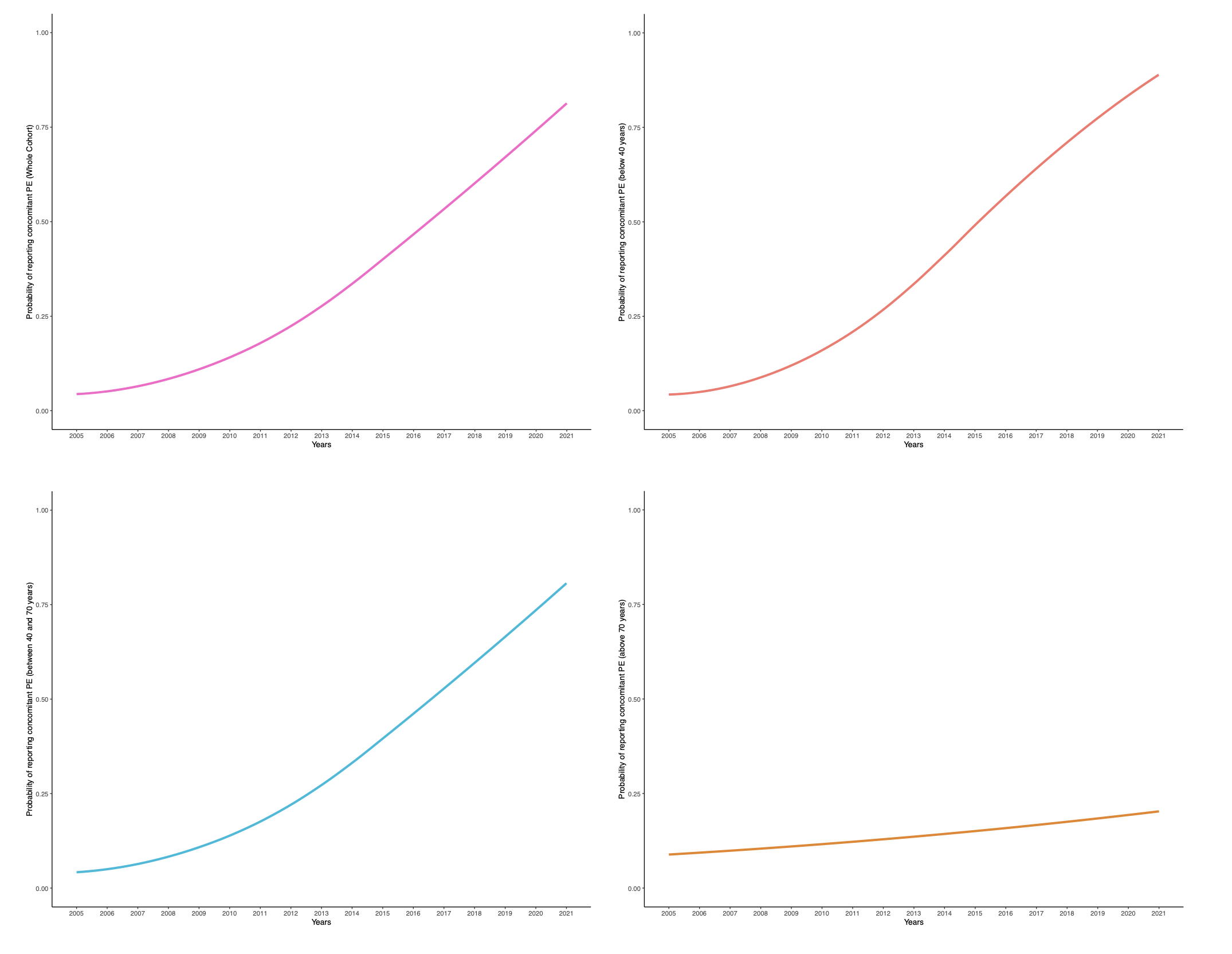Back
Poster, Podium & Video Sessions
Moderated Poster
MP21: Sexual Function/Dysfunction: Evaluation I
MP21-04: Trends of reporting premature ejaculation among men with erectile dysfunction – findings from a real-life cross-sectional study
Saturday, May 14, 2022
7:00 AM – 8:15 AM
Location: Room 222
Edoardo Pozzi*, Giuseppe Fallara, Federico Belladelli, Christian Corsini, Massimiliano Raffo, Luigi Candela, Antonio Costa, Daniele Cignoli, Nicolò Schifano, Alessia d'Arma, Paolo Capogrosso, Luca Boeri, Eugenio Ventimiglia, Rayan Matloob, Milan, Italy, Vincenzo Mirone, Naples, Italy, Francesco Montorsi, Andrea Salonia, Milan, Italy

Edoardo Pozzi, MD
MD
IRCCS Ospedale San Raffaele
Poster Presenter(s)
Introduction: Patients with erectile dysfunction (ED) may have an increased risk to report concomitant premature ejaculation (PE). We aimed to explore the trend of reporting PE across three different age groups of a homogenous cohort of men seeking first medical help for ED ( < 40 yr, 40-60 yr, > 70yr) over a 16-year period at a single tertiary academic centre.
Methods: Data of 1258 men consecutively assessed for ED as primary complaint by a single Sexual Medicine expert between 2005 and 2021 were analysed. Patients were divided into three age categories: i) <40 years, ii) 40-69 years, and iii) = 70 years. All patients were assessed with a comprehensive medical and sexual history. All patients completed the International Index of Erectile Function (IIEF) at baseline. Between the three groups i) descriptive statistics tested the sociodemographic and clinical differences; ii) regression models tested the probability of reporting concomitant PE over time; and, iii) local polynomial regression models graphically explored the probability of reporting PE (primary/secondary) together with ED over the analysed time frame.
Results: Overall, median (IQR) age was 51 (40-61) years. Of all, 326 (25.9%) reported either life-long or acquired PE at time of first clinical assessment. Among the three age groups ( <40 vs. 40-70 vs. > 70) there were no significant differences in terms of baseline IIEF domains. Younger patients reported higher rates of PE in respect to older ones (0.5% vs. 0.4% vs. 0.3%, p=0.001). Logistic regression analysis showed a statistically significant trend of reporting PE over the years among the < 40yr (OR: 1.4; 95%CI: 1.3-1.5) and 40-69yr (OR: 1.3; 95%CI: 1.2-1.4) groups respectively (all p<0.0001). A not significant trend was found in the = 70yr group. Figure 1 graphically displays the probability of reporting PE in the whole cohort and among the three age-matched groups between 2005 and 2021.
Conclusions: Almost one out of four patients seeking first medical help for ED also reports to suffer from PE. The probability of reporting PE (either primary or secondary) has been exceptionally increasing over the last 15 years among young ( <40) and middle-age (40-69) men with ED. This finding is of major clinical relevance in order to a better tailored therapeutic work-up in the real-life setting
Source of Funding: .

Methods: Data of 1258 men consecutively assessed for ED as primary complaint by a single Sexual Medicine expert between 2005 and 2021 were analysed. Patients were divided into three age categories: i) <40 years, ii) 40-69 years, and iii) = 70 years. All patients were assessed with a comprehensive medical and sexual history. All patients completed the International Index of Erectile Function (IIEF) at baseline. Between the three groups i) descriptive statistics tested the sociodemographic and clinical differences; ii) regression models tested the probability of reporting concomitant PE over time; and, iii) local polynomial regression models graphically explored the probability of reporting PE (primary/secondary) together with ED over the analysed time frame.
Results: Overall, median (IQR) age was 51 (40-61) years. Of all, 326 (25.9%) reported either life-long or acquired PE at time of first clinical assessment. Among the three age groups ( <40 vs. 40-70 vs. > 70) there were no significant differences in terms of baseline IIEF domains. Younger patients reported higher rates of PE in respect to older ones (0.5% vs. 0.4% vs. 0.3%, p=0.001). Logistic regression analysis showed a statistically significant trend of reporting PE over the years among the < 40yr (OR: 1.4; 95%CI: 1.3-1.5) and 40-69yr (OR: 1.3; 95%CI: 1.2-1.4) groups respectively (all p<0.0001). A not significant trend was found in the = 70yr group. Figure 1 graphically displays the probability of reporting PE in the whole cohort and among the three age-matched groups between 2005 and 2021.
Conclusions: Almost one out of four patients seeking first medical help for ED also reports to suffer from PE. The probability of reporting PE (either primary or secondary) has been exceptionally increasing over the last 15 years among young ( <40) and middle-age (40-69) men with ED. This finding is of major clinical relevance in order to a better tailored therapeutic work-up in the real-life setting
Source of Funding: .


.jpg)
.jpg)